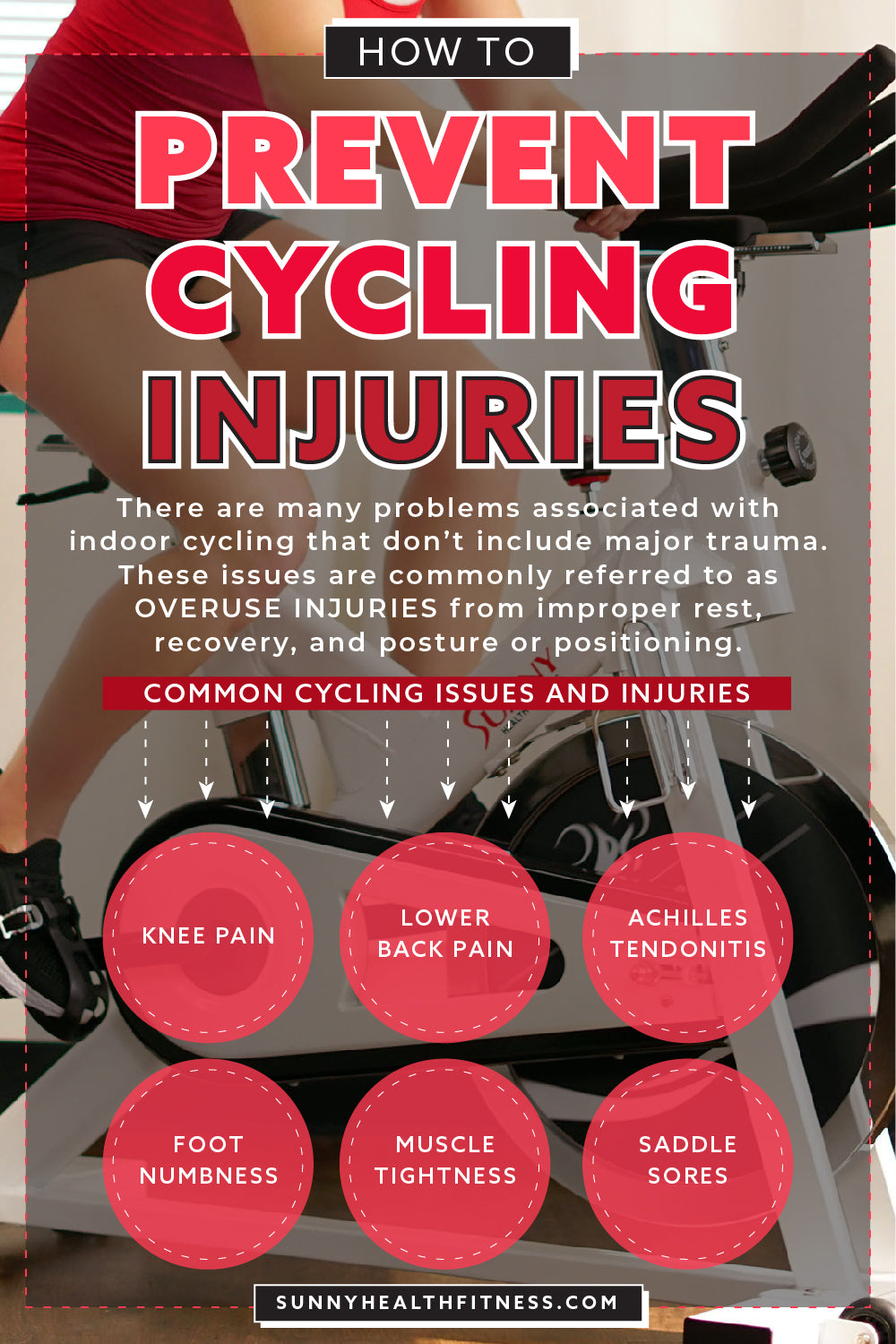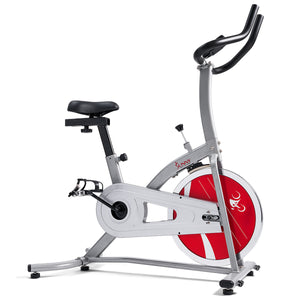How do people get injured while cycling?
Unless you are out cycling on the streets and trails, you will probably avoid major blunt force trauma from high speed impact to the ground, cars, or other riders. That doesn’t mean that cycling indoors is a risk-free activity. There are many problems associated with indoor cycling that don’t include major trauma. These issues are commonly referred to as overuse injuries from improper rest, recovery, and posture or positioning. Below you will find some areas and issues you should be aware of when starting your cycling workout routine.
Common cycling issues and injuries
1. Knee Pain
Knee pain can be described as any pain or discomfort in or around the knee joints on both or one side. While riding an indoor cycle bike is a great low impact activity that can help those with knee pain still participant in high intensity aerobic training, improper positioning of your feet in the bike pedals or clips can lead to aggravation. Not only will you increase your risk of knee pain and potential for injury, you will also be sacrificing power to your pedals from less optimal muscular engagement. Adjusting your seat height and seat fore and aft position can help alleviate keen pain. Checking your Q-factor (the distance between your feet on the pedals) can also help address knee pain that in coming from the inside of your knee. Adjusting your foot position on your pedals can also help you find better alignment. To know if your seat is in the right position, your knee should be in line with your toes
2. Lower Back Pain
Any good instructional video on proper exercise will stress the importance of having good posture during exercise. The same goes for cycling. If your back is not aligned properly due to poor set up on your bike, you could increase the risk of stress through your lower back muscles and joints. This can lead to both nagging pain during and post workouts. A quick way to alleviate stress in the low back is to ride in a more upright position. To do this, simply raise your handle bars up to a position higher than your seat height or higher. This will help you keep from hunching over and rounding your back and shoulders while using a lower handlebar position.
3. Achilles Tendonitis
This issue can arises form improper positioning of the seat height. If the seat is too high, your ankle will force your toes into a compromising position which can lead to too much stress on the tendon that runs from the bottom of your heel up the back of your ankle into your calf. This issue can also increase your chances of developing muscle tightness in your calf that can also be painful. Proper seat height will help ensure proper muscular engagement and reduce stress placed on the Achilles tendon.
4. Foot Numbness
Whenever you start to feel numbness or tingling in your feet, you should use that as a signal that something is not right. Usually this sensation comes from some kind of nerve issue or reduced blood flow to the area. Common reasons why this happens are because of improper foot alignment on the pedals, wearing unsupportive shoes, or wearing shoes that are to tight. Getting to the root issue of numbness will require a visit to your doctor, but you can take steps to help prevent foot numbness by ensuring proper foot placement on your pedals, wearing supportive shoes, or loosening the shoes you are currently wearing.
5. Muscle Tightness
Anytime you work out your muscles will contract and relax. Repeated contractions over long periods of time can cause the muscles to become tight. While it is common for muscles to adapt to the tasks they are being called on to achieve, if they don’t get stretched back into their optimal length, performance will suffer and increase risk of injury will occur during other activities. Stretching is a great way to help combat muscle tightness. You can also help prevent muscle tightness by ensuing that your muscles are properly warmed up prior to any workout.
6. Saddle Sores
Unfortunately, when we participate in any form of long duration exercise activity, the risk for skin irritation from friction between material and skin surfaces are hard to avoid. With cycling, its common to have irritations on the skin around your hips and thighs. Finding the right seat height and comfortable clothing can help reduce the severity of skin irritations like saddle sores and rashes.
Summary
The best way to ensure that you have an effective, fun, and injury free workout experience on your indoor cycling bike is to first fit your bike to your specific body mechanics. Check out our article on how to properly fit your bike here. We also have some video tutorials and articles you can view on different kinds of exercise bikes and how to fit them. Always maintain an upright riding position to reduce risk of lower back pain and wear appropriate shoes that are comfortable. Also, monitor your riding intensity and frequency. It's ok to scale back on the heavy resistance climbs or long miles to help your body recover form tightness, fatigue, or overuse. Throw in some cross training by performing different types of activities to help keep your muscles from tightening up from the same repetitive motions. While it’s possible to overcome many common injuries on your own, it’s important to visit your doctor if you experience any acute or long-term pain during your workouts.

























Add Your Name & Email
Please enter your name and email to continue.We won’t display your email publicly.